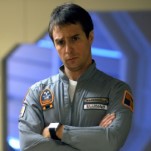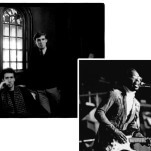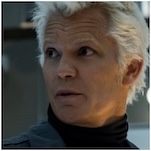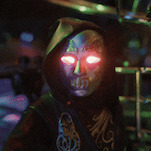Joseph Gordon-Levitt: Hollywood’s Boy Wonder Grows Up
Photo by Matt HoyleRECORD.
In the mind-melting Inception, Gordon-Levitt’s Arthur is no dreamer—he wears starched suits, slicks back his hair and speaks in clipped noun-verb combinations. He’s chided for having “no imagination,” and yet his business is imagination itself.
Together with dream-heisting partners in crime, Arthur must plant a thought in the mind of a business scion. Arthur’s role is ambassador to the unconscious mindscape for Ellen Page’s Ariadne. He trains her on how time flows in the dream universe, and how to bend the subconscious landscape into a series of infinite loops, moving staircases until they resemble an M.C. Escher painting.
In an imagined hotel deep inside his own dream, Arthur sprints into a hallway and is attacked by a security guard. The two fight and tumble to the ground until an earth-shattering explosion hits, gravity shifts and they’re fighting on the wall—then the ceiling. Arthur kills the guard, but other assailants arrive and they scramble over every surface in the hall, as though circling a revolving corridor. Finally Arthur leads his last opponent to a stairwell, backing him against the steps. The guard screams and falls into blackness, and Arthur whispers “paradox.”
PAUSE.
As we’re talking and finishing up our meal at Lamill, Gordon-Levitt slowly and absent-mindedly presses his thumb against the vinyl table again and again, picking up the crumbs from his bread.
He’s telling me about The Secret of Kells, the Tomm Moore and Nora Twomey-directed animated film about the ancient Celtic illuminated-Gospel manuscript Book of Kells, nominated for Best Animated Feature at this year’s Academy Awards.
“I’m a sucker for kind of ancient magical stuff,” he says.
-

-

-

-

-

-

-

-

-

-

-

-

-

-

-

-

-

-

-

-

-

-

-

-

-

-

-

-

-

-

-

-

-

-

-

-

-

-

-

-








































